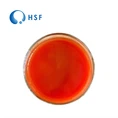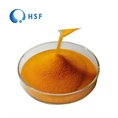Fermented Herbal Extract Powder is a mixed Chinese herbal medicine powder fermented by microorganisms, which has high utilization value.

What is Fermentation Method?
China already knew how to use microbial fermentation to make wine more than 4,000 years ago, and then successively used microbial fermentation to produce foods such as sauce, vinegar, tempeh, and stinky tofu. More than a thousand years ago, China began to apply microbial fermentation to the processing of traditional Chinese medicines, thus becoming one of the first countries in the world to use microorganisms to bio-transform natural medicines.
The fermentation method refers to the method of foaming and undressing the medicine after purification or treatment under certain temperature and humidity conditions through the action of mold and enzymes. The optimal temperature for traditional Chinese medicine fermentation is 30~37℃, and the relative humidity is 70%~80%. Under these conditions, it is suitable for the growth and reproduction of most molds and yeasts.
Fermentation Methods
There are three main types of modern fermentation methods commonly used in the market.
1. Solid fermentation
Solid fermentation refers to the use of agricultural and sideline products with a certain humidity as nutrient substrates, one or more strains as strains, and one or more strains as strains under the condition of no free water or extremely low free water. kind of content. The fermentation method was developed from the koji-making process and has been improved and optimized.
2. Liquid fermentation
Liquid fermentation is a modern fermentation technology. Relying on the production process of antibiotics, the mycelium with good growth condition is inoculated into the medium containing a certain proportion of Chinese medicinal materials, and then the medium is placed in suitable environmental conditions for fermentation.
3. Two-way solid fermentation
Bidirectional solid fermentation technology relies on solid fermentation. The difference is that the nutrient substrates for bacterial growth are converted into Chinese herbal medicines or medicinal residues. Therefore, while Chinese herbal medicines provide nutrients to fungi, their structural components are also affected by fungal metabolites or cytokines.





